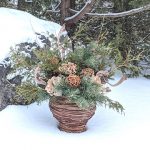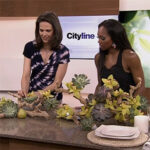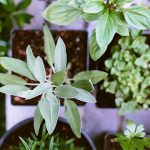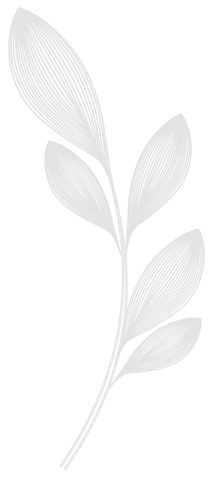I often joke that I must have been a landscape designer in a previous lifetime. Although my formal training is in interior design, landscape design and gardening has always come easily to me. Maybe because I enjoy it so much! I have worked on many garden and property projects over the years, and one of my favorite things to design and install are the garden containers.
Property design, when you factor in design and construction, takes a long time. Planters are instant gratification. Easily within a day you can add these gorgeous accessories to your garden. You need a pot, some soil, and some plants. Having said that, everyone has their technique and/or checklist. I am going to share with you some of my best containers, and how I approach my container designs.
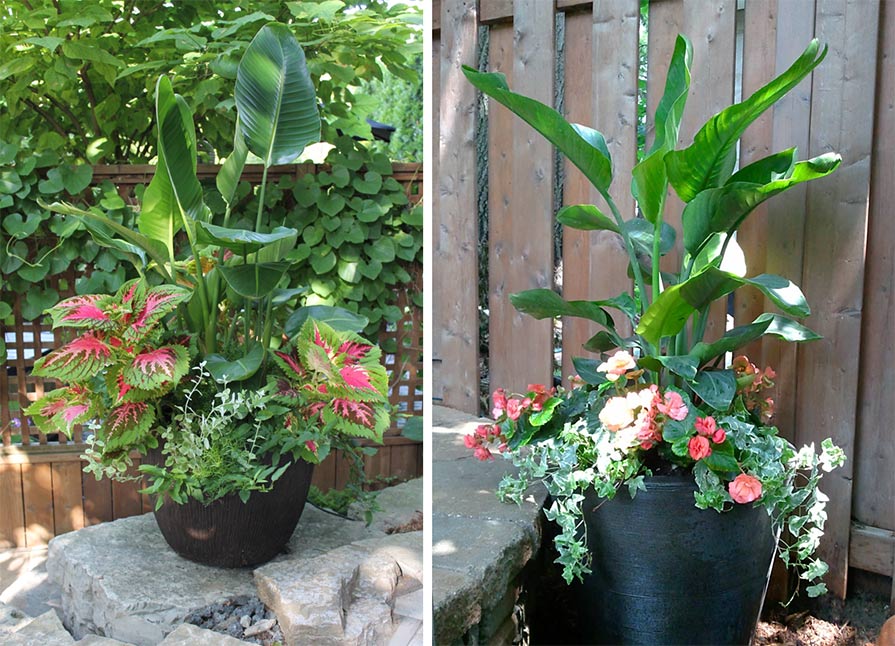
COMPLIMENTING FULL SUN (LEFT) AND FULL SHADE (RIGHT) PLANTERS
Container Location
You have probably already determined where you want to locate your container/s. If you have not, that would be the first step. Look around the garden and notice the areas that could use an extra splash of summer greenery and colour. If there are many, then choose the areas that you can realistically address.
ASSESS THE PLANTER LOCATION:
- what kind of light does the location receive; are you planting sun or shade tolerant plants
- how big is the area, and if it’s a high traffic zone or a tight corner do you need to limit the spread (overall width) of your container plants
- think about scale and what size planter would look good; for example a small 2ft wide by 2ft high planter will likely look out of place on a large expansive front porch; perhaps a larger arrangement, or a grouping of three containers would be better
- mentally block out the area that your container will occupy with plants installed (height and width); with a measuring tape approximate these dimensions and write them down
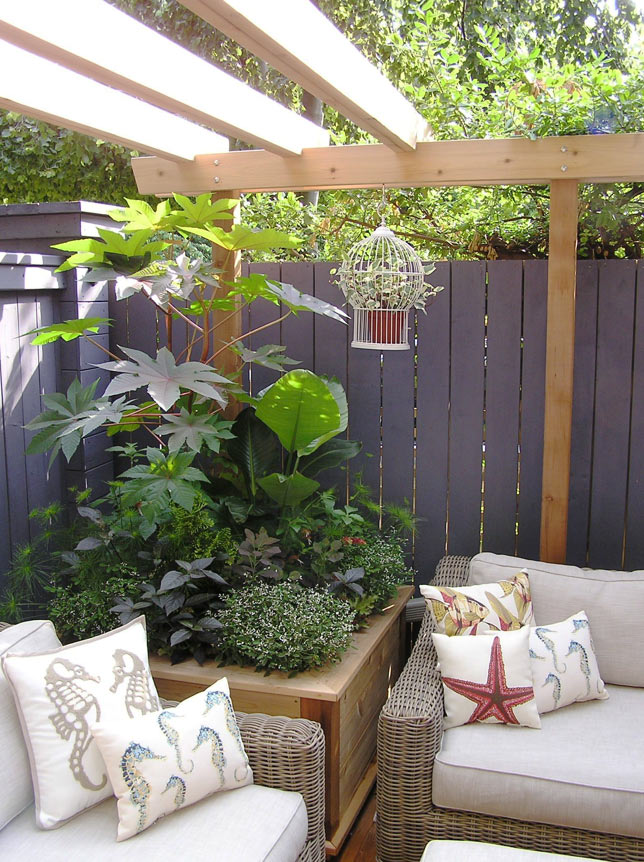
CASTOR BEAN IS THE TALL UPRIGHT PLANT IN THIS PLANTER
Source the Container
In my design-centric world it is a no brainer to source the container first. Although there are many containers out there, when you narrow them down to perfect size, shape, style, and price, suddenly there are not so many.
In your location assessment, you approximated the area your container and plants will occupy. Now approximate the width and height of your container, without the plants.
RULE OF THUMB: your plants (at their mature height) should be 1-2 times the height of the container. If your container is 24in high, then your plants should be 24-36in high. There are all kinds of exceptions to this rule so do not let it stop you from being creative. Design rules are meant to be broken.
Allow yourself some time to source the container. You may not like the first one you bring home and that is okay. Return policies are your friend. You will know when you have the right one because there will be a very satisfactory feeling of “yeah, I got this.”
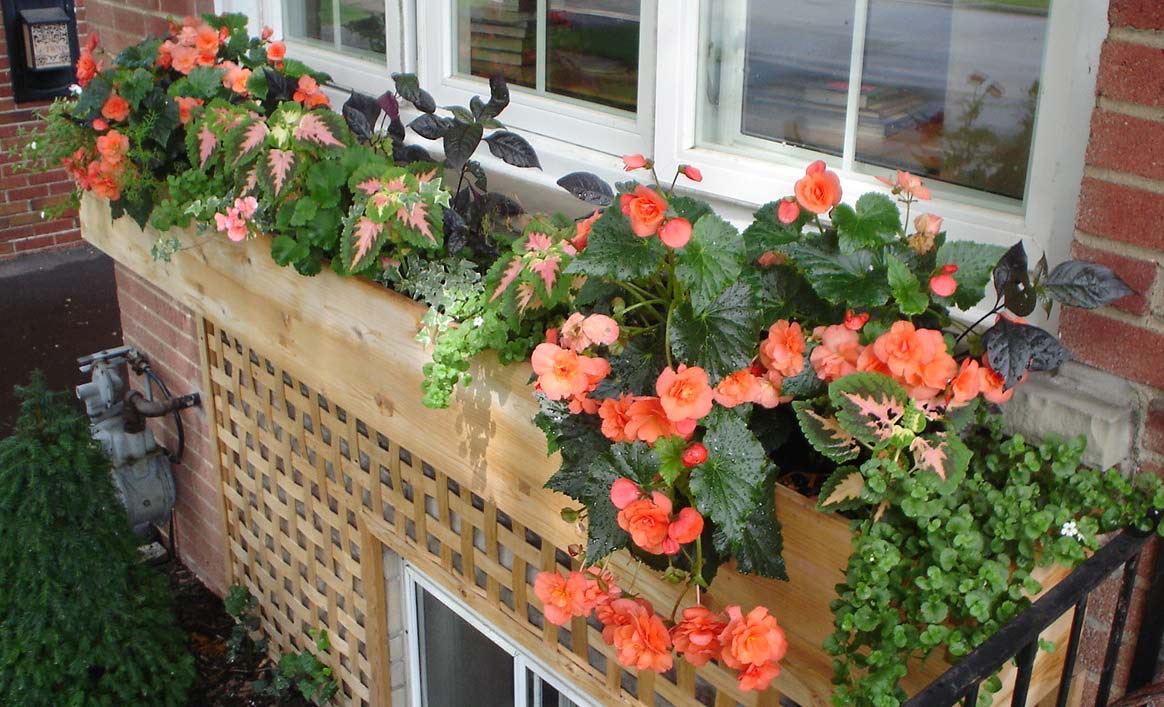
A BEAUTIFUL VIBRANT SHOW OF ORANGE COLOUR IN THIS WINDOW BOX
Purchase the Supporting Materials
POTTING SOIL: Container plants need “potting soil”. This is a special blend of soil that will support your container plants. Soil from the garden is too dense and may not support root growth or provide the proper nutrients.
INTERIOR POT: Your container must have holes in the bottom for drainage. If it does not, then you will need to purchase and install an internal container with holes.
FERTILIZER: Although plants will do okay in potting soil, they will not thrive. The nutrients in the soil will be consumed quickly and should be supplemented with a fertilizer suitable for outdoor flowering plants.
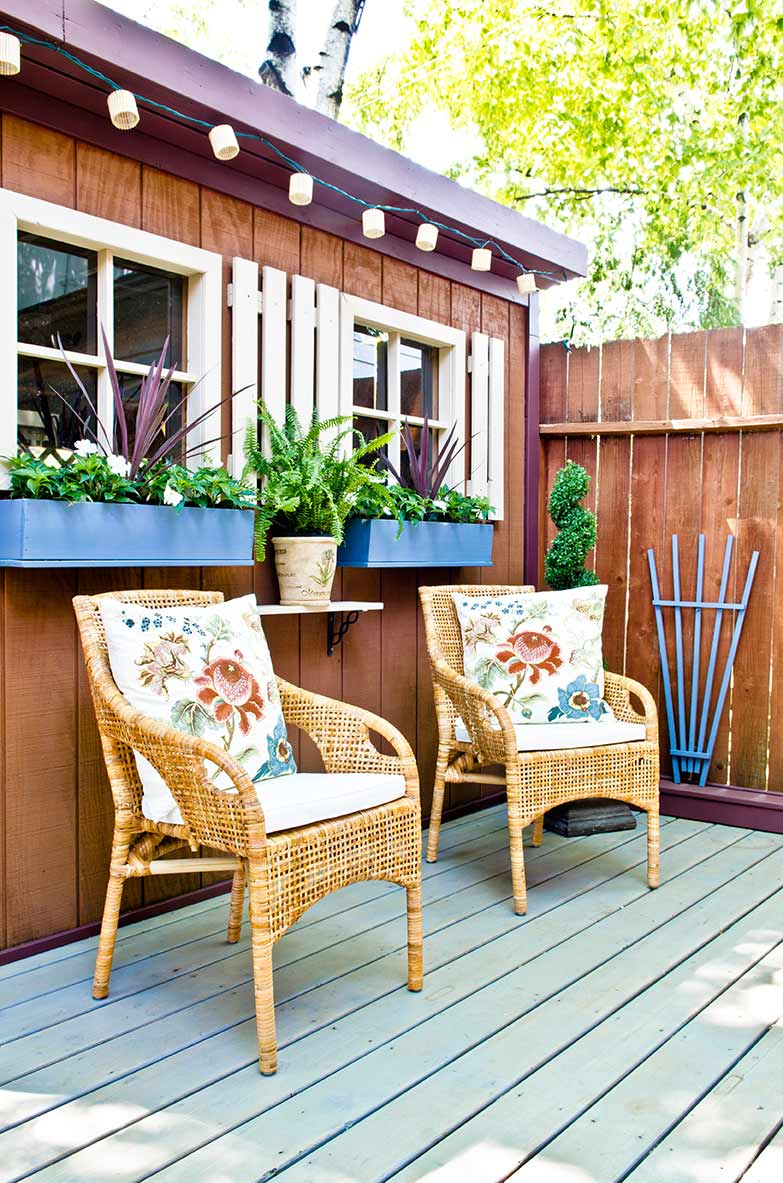
A TYPICAL INDOOR PLANT, THE FERN DOES WELL IN THIS PART SHADE LOCATION
Design and Source the Plants
Garden centers will seldom be consistent in the plants they stock—variety, colour, and size of plant will vary. Understandably they are at the mercy of what their suppliers have in stock. Some plants will sell out faster than others and/or a shipment may be late.
This makes it very difficult to pre-select the plants you would like to have in your arrangement. It is do-able but generally with disappointing results.
In my opinion, the best and most successful way to select the plants for your container is to head to a large garden center with lots of variety and stock. Ideally this garden center will have a combination of indoor plants, annuals, perennials, and shrubs. Bring your container. You do not need to carry it around with you, but have it in the car for a last-minute visual check before you purchase your plants.
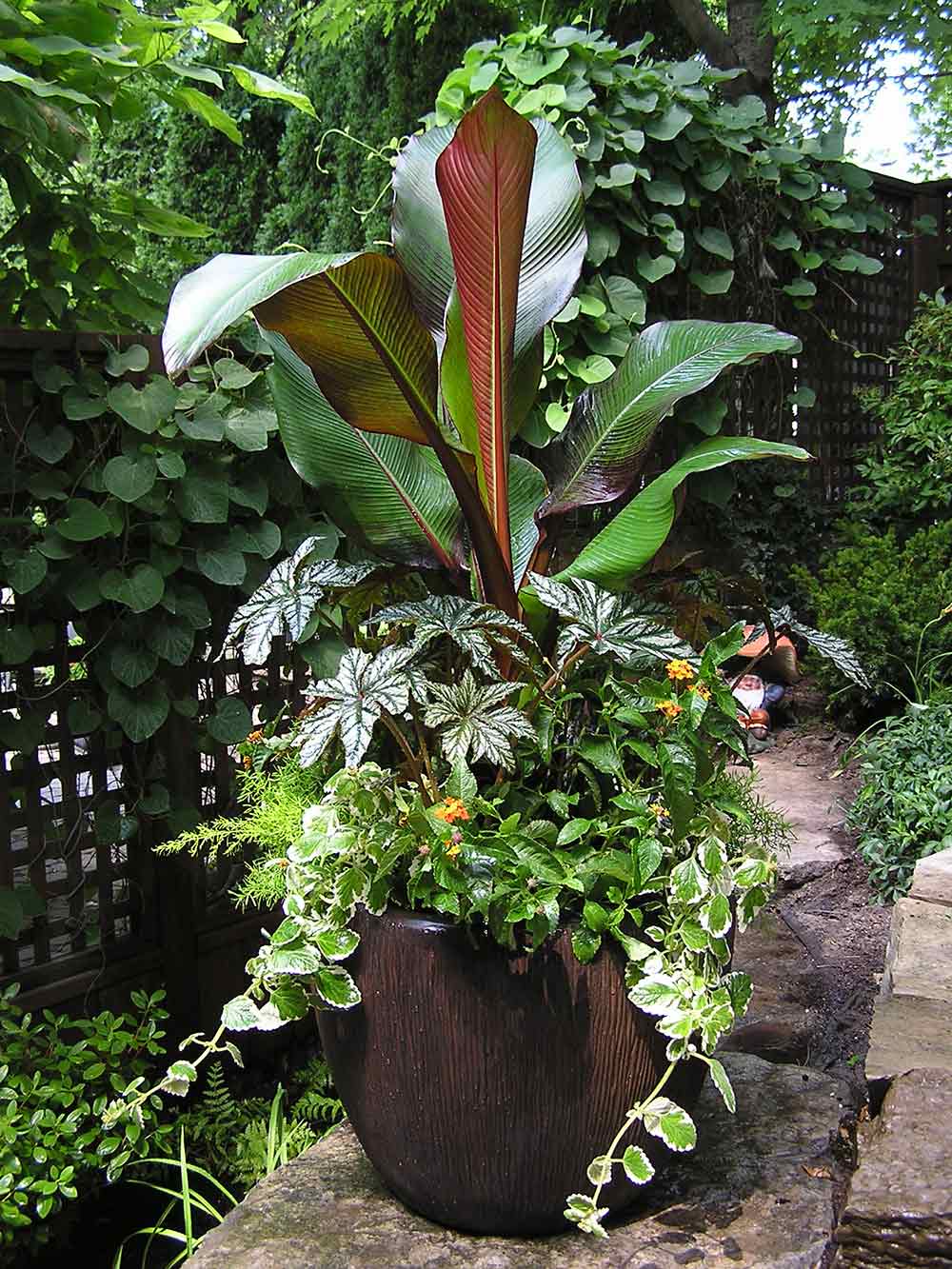
IN A LUSH URBAN GARDEN THIS UPRIGHT BANANA PLANT IS A BOLD AND UNIQUE STATEMENT
WORKING THE GARDEN CENTRE
- upon arrival, walk around the store and assess what they have
- determine which plants are good for your location (full sun, part shade, or full shade plants); ask a sales assistant for help; there are quite a few indoor plants that do well in part shade, or bright shade locations (English Ivy, Pothos, Asparagus Fern, Begonias, for example)
- your arrangement should have one or more of the following: a tall upright plant, a broad plant, and a trailer; this is a guideline only; also keep in mind the colour scheme of your garden or the colours of your home; consider bringing paint chips with you that represent the colours you are working with
- start with the tall upright plant; this will be the centerpiece of your arrangement; determine what its general height will be for the duration of the summer; some plants like the Castor Bean grow very fast and could quickly be out of scale with the rest of your plants; a Bird of Paradise will grow much slower; consider shrubs as tall centerpieces or broad plants
- with one or two tall upright plants selected as potential centerpieces, place them in your cart and move on to the broad plants; look for plants that look good with and compliment your tall upright plants; select a few things that you like and place them in your cart; consider annuals, perennials and shrubs
- repeat this step with your trailers; design your arrangement in the shopping cart by grouping various things together and in various quantities; if you have a lot of plants to source you can also ask the garden center if there is a spot off to the side, where you can collect your plants; visiting the garden center during a quiet day of the week will grant you more favours
- remember that the plant root balls—which are the size of the pot they come in—will need to fit into your container; you cannot cut them in half or stack them to make them fit; ideally after all the root balls are in the container there is still room for additional soil
- when you have edited down your plants and designed an arrangement you are happy with, double check to ensure they look good with the container
- purchase your plants and transport them home; when you arrive home make sure your plants are well watered and place them in a protected area until you are ready to transplant them to your container
Design for Conscious Living® is a full-service interior and exterior design company. We can help you with everything from decorative garden containers to the design and installation of your dream garden.


